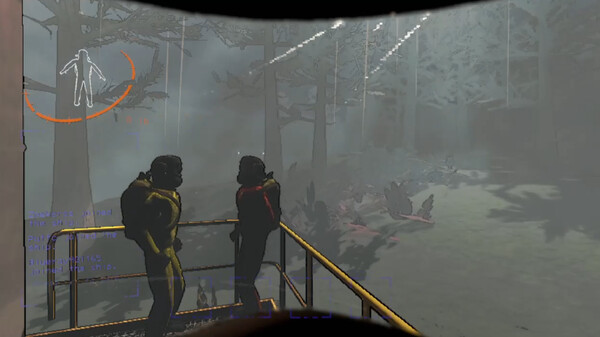Introduction
Hello Neighbor is a stealth-based horror puzzle game that challenges players to infiltrate a suspicious neighbor’s house to uncover his dark secrets. What sets this game apart from other horror titles is its dynamic AI system that learns from your movements and evolves based on your strategies. Developed by Dynamic Pixels and published by tinyBuild, this indie game has intrigued players with its mysterious narrative, eerie atmosphere, and unique gameplay structure.
This in-depth article will walk through the origins, mechanics, evolution, and impact of Hello Neighbor, diving into its various acts, AI technology, critical reception, and expansions. Whether you’re a curious newcomer or a fan looking to revisit the game’s legacy, this guide offers expert analysis and a balanced review.
1. Origins and Concept – The Spark of Innocent Horror
Inspiration and Early Vision
The concept for Hello Neighbor was born from a simple yet twisted idea: what if instead of being chased by monsters, you were spying on an ordinary person? Inspired by suburban paranoia and psychological thrillers like Rear Window, the developers focused on reversing the traditional horror role—where the player is the one doing the invading.
The eerie yet cartoonish design was deliberate. The game’s visuals are meant to mislead, initially appearing child-friendly before revealing a dark undercurrent. This contrast between bright colors and haunting narrative creates emotional tension throughout.
Early Development Timeline
-
2016: Early alpha versions were released via Steam and other platforms, receiving instant buzz due to the adaptive AI.
-
2017: The full version launched for PC and Xbox One in December.
-
2018–2019: PlayStation 4, Nintendo Switch, iOS, and Android ports followed, helping the game expand to a global audience.
With a small team but a huge ambition, the developers leaned heavily on community feedback to refine the AI and puzzle elements during development.
2. Story and Setting – Secrets Beyond the Fence
The Mysterious Neighbor
You play as a young boy who suspects something is deeply wrong with his neighbor across the street. His peculiar behavior and efforts to keep people out of his basement only intensify your curiosity. As you sneak around his home, you uncover a twisted story told through environmental storytelling—no dialogue, just clues.
A Narrative Told Through Silence
There are no cutscenes in Hello Neighbor. Instead, the story is embedded in the design—through hidden rooms, newspaper clippings, surveillance equipment, and eerie flashbacks. Each act uncovers more of the neighbor’s background and the psychological trauma he may be hiding. The vague, surreal nature of the storytelling invites interpretation, making it a favorite for fan theories and lore videos.
3. Gameplay Mechanics – Sneaky, Puzzle-Driven, Dynamic
Stealth Gameplay
The core gameplay revolves around sneaking into the Neighbor’s house without being detected. Players must navigate corridors, pick locks, disable cameras, and find objects needed to unlock new areas—all while avoiding the ever-watchful Neighbor.
He will chase you if you’re spotted, and you’ll have to escape quickly or be caught. Unlike other games, getting caught doesn’t mean “game over,” but resets the house with minor changes—often based on your previous actions.
Smart AI System
One of Hello Neighbor's standout features is its AI system:
-
It learns from your behavior.
-
If you use the same entry point repeatedly (like climbing through a specific window), the AI will adapt by setting traps or blocking that route.
-
The more predictable you are, the harder the game becomes.
This forces players to keep evolving their strategies, which adds depth and unpredictability to the experience.
Puzzle Integration
The house is full of puzzles and hidden areas. You’ll need to:
-
Use magnets to pull keys through locked grates.
-
Re-route electricity to disable traps.
-
Stack objects to reach hidden passages.
This blend of stealth and environmental puzzle-solving keeps the gameplay fresh, but also leads to occasional frustration due to trial-and-error limitations.
4. Evolution of the House – Act-Based Structure
Act 1: The Introduction
The first act introduces players to the mechanics in a relatively simple layout. The Neighbor’s home is still realistic—normal rooms, light security, and minimal interference. This allows you to explore and get a feel for the AI’s behavior.
Act 2: Confinement and Complexity
In Act 2, the player is trapped within the Neighbor’s house and must escape. The house becomes more fortified, and the puzzles more intricate. This section introduces climbing, platforming, and more AI pathing changes.
Act 3: Surrealism and Secrets
Act 3 is where the house becomes a twisted fortress. It expands vertically and horizontally, almost like an impossible structure. Rooms are out of proportion, gravity can shift, and dream sequences occur. This is the psychological heart of the game, where reality bends and the narrative becomes truly disturbing.
5. Visuals and Audio – Uneasy Suburban Aesthetics
Graphics and Style
The visual design is deceptive. It presents as cartoony, with exaggerated shapes, colorful environments, and expressive animations. However, the further you progress, the more the tone shifts. Shadows grow longer, the color palette darkens, and the house starts to feel alive.
This intentional contrast enhances the psychological horror. It lures players into a false sense of comfort before subverting expectations.
Sound Design
Sound is used masterfully:
-
Footsteps are directionally balanced, letting players “hear” the Neighbor’s proximity.
-
Background music is minimal but ramps up during chase sequences.
-
Environmental noises—door creaks, window breaks—add to the tension.
Silence becomes one of the game’s most terrifying tools.
6. Platform Ports and Spin-Offs – Growing the Franchise
Console and Mobile Ports
The game has been successfully ported to:
-
PC
-
Xbox One
-
PlayStation 4
-
Nintendo Switch
-
iOS and Android
The core gameplay remains the same, though the performance and controls vary. Mobile versions can be harder to navigate due to touch-screen limitations, and some visual downgrades are evident on Switch.
Spin-Offs and Expansions
-
Hello Neighbor: Hide & Seek
A prequel that explores the Neighbor’s backstory and family life. It's more emotional, less horror-driven, and explains some of the trauma behind the Neighbor’s behavior. -
Hello Engineer
A multiplayer building game where players use scraps to create machines and solve challenges. -
Hello Guest
Originally a prototype for Hello Neighbor 2, it explored AI evolution in a public amusement park.
These spin-offs help expand the world, though some received mixed reactions regarding gameplay polish and focus.
7. Critical Reception and Player Response
Positive Reviews
-
Players praised the dynamic AI, which offered a refreshing take on horror gameplay.
-
The puzzle structure and non-linear narrative kept many intrigued and replaying the game.
-
The mystery-driven storytelling sparked massive theory-crafting communities online.
Negative Feedback
-
Bugs were common, particularly with the AI teleporting or getting stuck.
-
Some puzzles lacked intuitive design, forcing players to resort to guides.
-
Visual and audio glitches detracted from immersion, especially on console ports.
While critics were split, the game cultivated a loyal fan base that continues to grow.
8. Expert Analysis – What Makes Hello Neighbor Unique?
Pros of Adaptive AI
-
The AI system rewards creativity and punishes predictability.
-
It forces you to think several moves ahead, like in a chess match with a horror twist.
Downsides of AI Complexity
-
Inconsistent behavior occasionally breaks immersion.
-
The AI sometimes feels unfair—predicting moves that no human player could.
Puzzle Design
-
The puzzles encourage exploration and experimentation.
-
However, the lack of in-game guidance can make progress frustrating for casual players.
9. Final Verdict & Rating – Should You Play Hello Neighbor?
Category Ratings (out of 10):
-
AI / Gameplay Mechanics: 8.5
-
Story & Lore: 7.5
-
Visuals & Audio: 7.0
-
Replayability: 8.0
-
Stability & Polish: 6.0
-
Overall Score: 7.5 / 10
Verdict
Hello Neighbor is an imaginative, risk-taking horror game that breaks from genre conventions. Its biggest strength—the adaptive AI—is also its biggest risk. When it works, it creates a genuinely unpredictable experience. When it falters, it can feel unfair or buggy.
Despite its flaws, the game’s mysterious narrative, evolving world, and stealth-based challenges make it a worthwhile play for fans of indie horror and puzzle adventures.
Conclusion – A Suburban Nightmare Worth Exploring
Hello Neighbor isn’t about cheap scares or gore. It’s about curiosity. What lies beneath the surface of a perfectly ordinary neighborhood? Why is the man across the street always looking over his shoulder?
The game’s ability to merge stealth, horror, and mystery within a constantly changing world is impressive. While it may frustrate with its bugs and ambiguous goals, the atmosphere and depth it delivers are more than enough to keep players coming back for another peek behind the curtain—or in this case, the basement door.
If you’re looking for a horror game that challenges your wits more than your reflexes, Hello Neighbor might just be your next obsession.





























